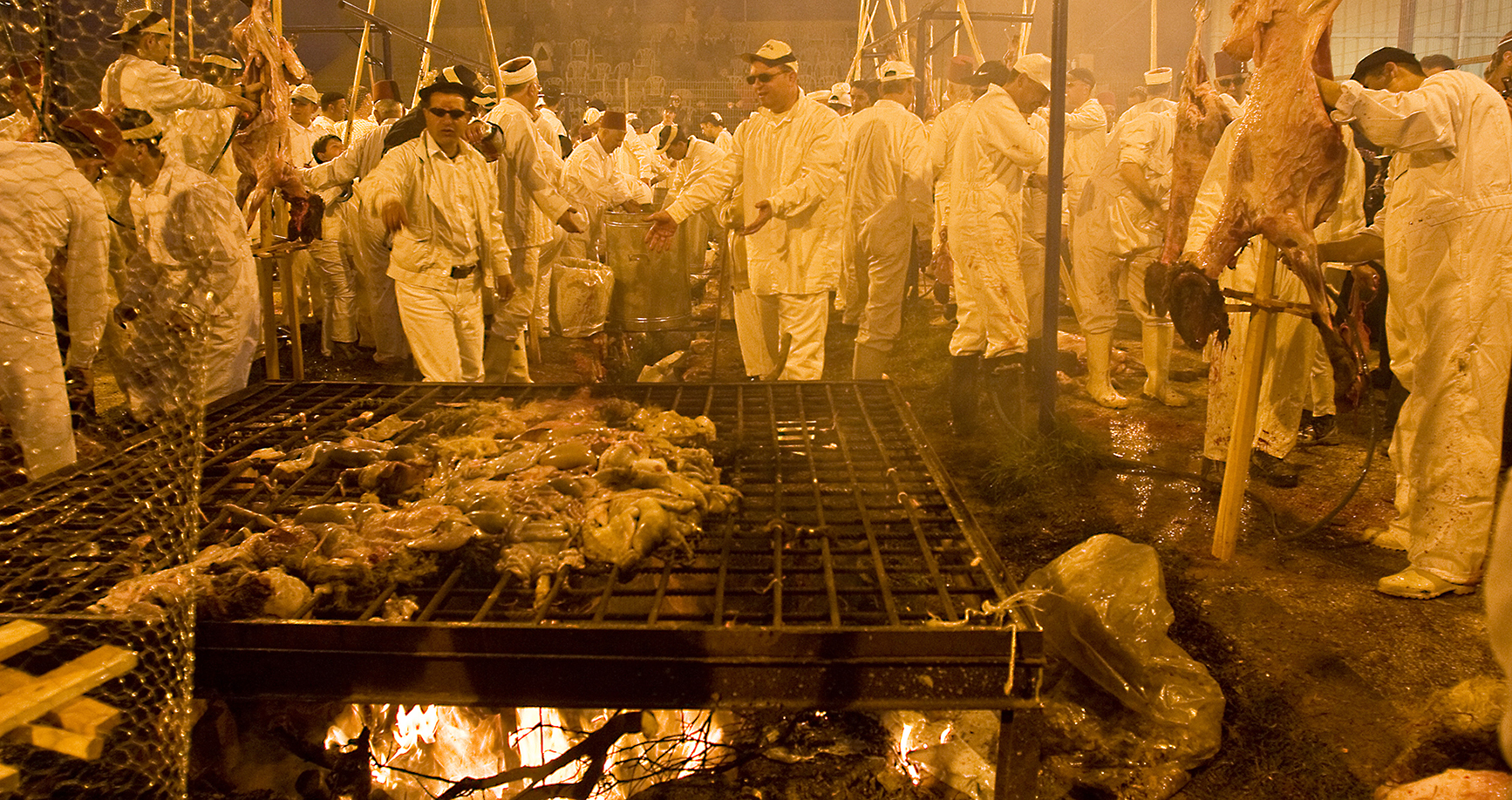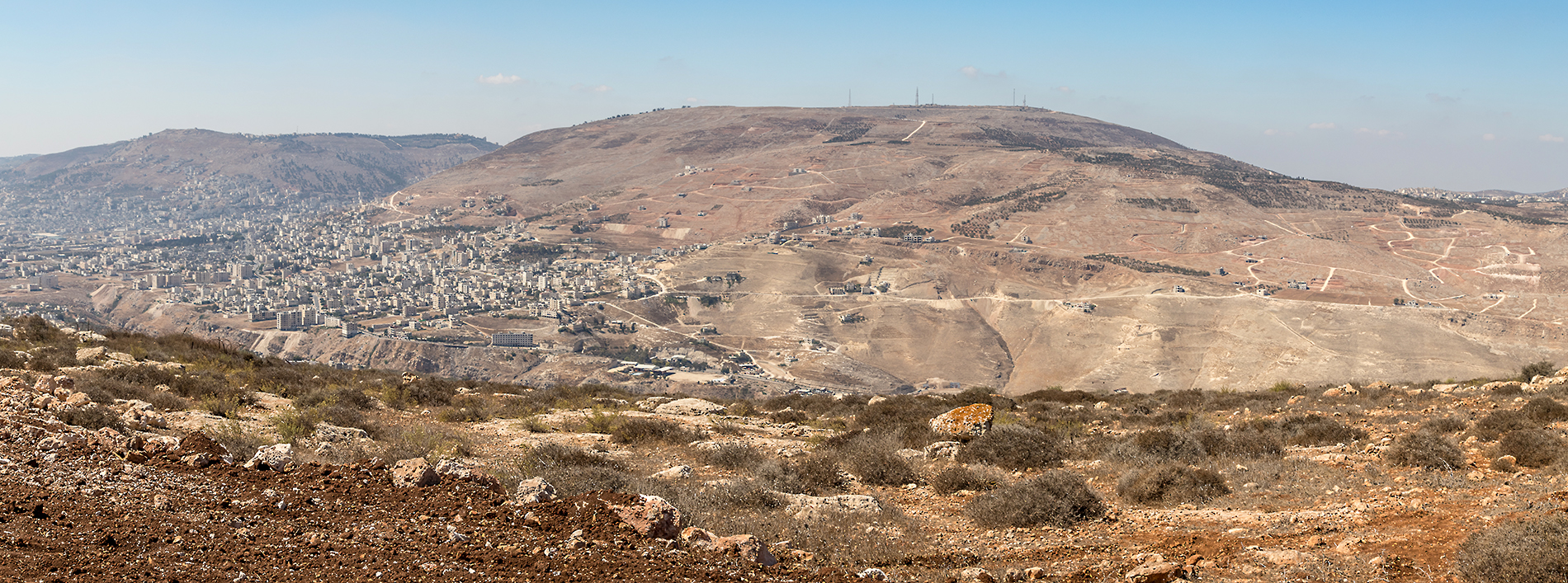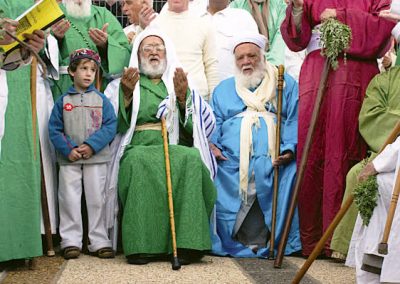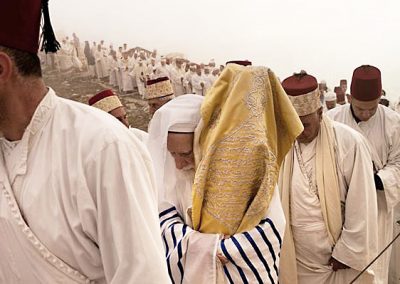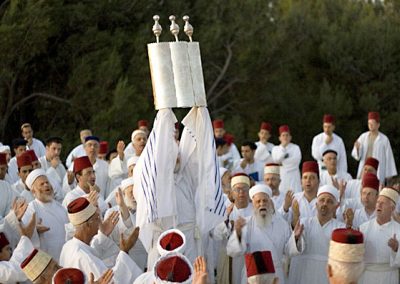
Bible, History, Archaeology
Bible,
History,
Archaeology
The Samaritans
Introduction

Image opposite: a Samaritan priest presenting an ancient scroll from their Pentateuch. Early 20th century photo © DR.
The Samaritans consider themselves to be the legitimate descendants of the Israelites. When they use the appellation «Samaritans» to designate themselves, it is not, as is commonly believed, to identify themselves with the inhabitants of Samaria, the Shomeronim (2 Kings 17,29), but to call themselves Shomerim, i.e. «guardians» (of the holy text, of truth). (Jean-Daniel Macchi). Their origin and their sacred texts, however, pose many problems.
Origins of the Samaritans
According to an ancient opinion, which is still widely accepted, they copied a sacred writing that they possessed prior to the schism of 931 B.C., which would mean that the existence of the Samaritans did not date from the deportation ordered by Sargon II, but that a Samaritan community dissident from the Jerusalem cult may already have existed at that time.
According to the biblical text
«In the first year of my reign […] I besieged and captured the city of Samaria. I took captive 27,290 of its inhabitants. I took 50 of their chariots, to add to my royal strength. […] I returned and did more than just settle in formally. I established over them my officers as governors. I imposed tribute and taxes on them, according to Assyrian custom.». Annals of Sargon II.
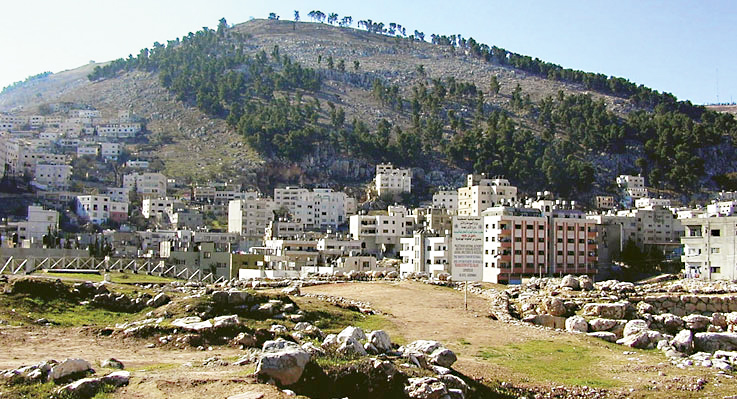
Visit Pentateuch (the first 5 books of the Old Testament) would have been given to them by the priest in charge of instructing the colonists brought from Assyria to repopulate Samaria (2 Kings 17,28). The people mixed their original cults with that of the Lord, and this mixed worship probably continued until the fall of Jerusalem in 586 BC.
Image opposite: Mount Gerizim from Shechem (now Nablus). In the foreground, some remains of a temple that some specialists date to the Middle Bronze and Late Bronze periods. © Todd Bolen.
The Assyrian king Assar-Haddon continued the deportation policy of his grandfather Sargon II (Ezra 4:2), and Assurbanipal completed the colonization by adding people from Elam and elsewhere to the population of Samaria (Ezra 9, 10).
When the Jews returned from exile at the end of the 6th century BC, the Samaritans offered to help rebuild the Temple, the city and the walls of Jerusalem, but Zerubbabel and Joshua rejected their offer. Real hostility developed between the Jews and the Samaritans. The Samaritans succeeded in bringing work to a halt through slander and denunciation until the second year of the reign of Darius Hystape (around 520 BC and dedication of the new Temple around 515 BC). Nehemiah overcame the obstacles that led to a complete political and religious split with the Samaritans.
The Samaritans celebrate Passover on Mount Gerizim. Ovens are dug into the ground and filled with wood for cooking animals. © Doron Nissim.
Samaritans in the inter- and neo-testamentary period
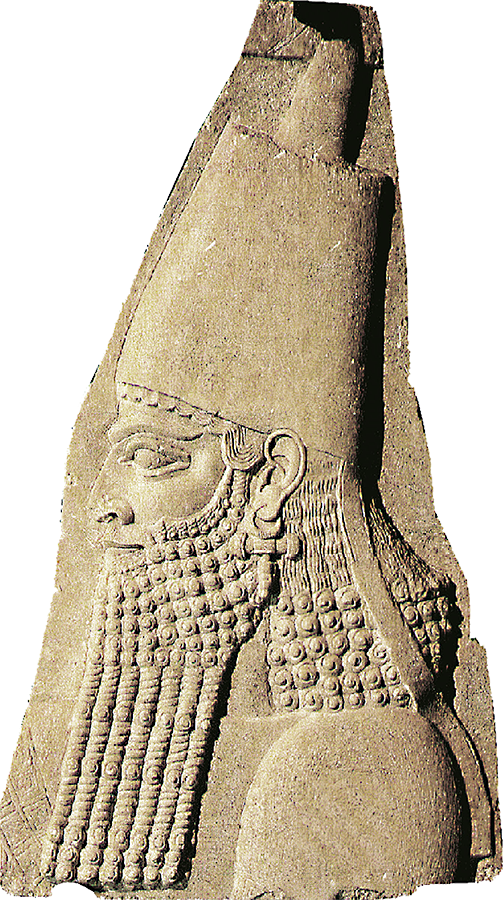
In Deuteronomy 27:4, Moses commanded the people, when they had crossed the Jordan, to erect an altar made of «uncut stones» on Mount Ébal, to coat them with lime and write the Law on them. To increase veneration for their sacred mountain, the Samaritans are said to have replaced Mount Ebal with Garizim (Prof. Adam Zertal, University of Haifa).
Image opposite: a bas-relief depicting Sargon II © Egyptian Museum, Turin, Italy.
During the persecutions of Antiochus Epiphanes, the Samaritans compromised with the tyrant and declared that they wanted to dedicate their temple to Jupiter.
Around 128 BC, the Hasmonean king Jean Hyrcan destroyed Samaria after a year-long siege, seized Shechem and destroyed the remaining temple on Mount Gerizim (Jewish antiques 13.9.1). Despite this, the Samaritans continue to worship at the site to this day. So it was in New Testament times.
The Samaritan Pentateuch
The Samaritans have remained faithful to their version of the Torah, which they claim to this day is superior to that handed down by the Massorets and dates back to before the schism of 931 (?). They practice circumcision and observe the Sabbath.
The Jews' main criticism of the Samaritans is their rejection of all the books of the Tanakh, rabbinic traditions and the oral law compiled in the Mishna and Gemara, with the exception of the Law contained in the Pentateuch and the subsequent Book of Joshua.
The Samaritans possessed a Pentateuch in Hebrew, mentioned by Jerome, Eusebius and other Church Fathers. Most Samaritan scrolls containing all or part of the Pentateuch are not considered to predate the 10th century CE; one or two of the scrolls preserved in Nablus (ancient Shechem) are thought to be older. The various Samaritan scrolls are written in characters similar to those used on the coins of the Maccabean period, characters that the Israelites used before the introduction of «square» Hebrew.
 Image above: Samaritan alphabet. © Aith the kind permission of the Alphabets Association.
Image above: Samaritan alphabet. © Aith the kind permission of the Alphabets Association.
Of all the Pentateuch manuscripts, the Samaritan text contains the most variants of the Massoretic text preserved by Jewish tradition. There are some 6,000 differences, or approximately one per verse.
Of all the Pentateuch manuscripts, the Samaritan text offers the most variations on the Massoretic text preserved by Jewish tradition. There are some 6,000 differences, or approximately one per verse. There are some 1,600 passages where the Samaritan text agrees with the Septuagint but not with the Hebrew scriptures, indicating that the Septuagint translates a Hebrew text very similar to that of the Samaritans.
Image above: Hebrew alphabet, known as «square». © Aith the kind permission of the Alphabets Association.

Image opposite: Samaritan Pentateuch, Samaritan synagogue on Mount Gerizim © Deror_avi.
A small community of Samaritans has survived to the present day in the Nablus area. It is made up of two groups, one living in the village of Kiryat Luza on their holy mountain, Garizim (in the Palestinian territories) and the other in Holon, Israel. Today, the Samaritan community is divided into eight «patriarchal houses», four of which are descended from a house related to the Danafis (tribe of Dan), the others being Levi (the largest), Tsedaka (Manasseh) and Marhib (Ephraim). The State of Israel recognizes them as Jews, although they do not consider themselves as such. They call themselves Samaritan Israelites. They await the advent of Taheb, son of Joseph, the Mashiach («Messiah» in Greek) similar to Moses (Deuteronomy 18, 15).
Situated between Mount Gerizim (in the background, left) and Mount Ebal (right), the town of Shechem (today Nablus) is a major site in Scripture, where the Lord promises to give Abraham this land flowing with milk and honey. © Alefbet.
Today, the Samaritan community is divided into eight «patriarchal houses», four of which are descended from a house related to the Danafis (tribe of Dan), the others being Levi, Tsedaka and Marhib. © Danny Yanai.
Today, the Samaritan community is divided into eight «patriarchal houses», four of which are descended from a house related to the Danafis (tribe of Dan).
Samaritan high priest Abdullah Wassef Tawfiq (left) stands in his living room with a homemade succah made from fresh fruit for the Feast of Tabernacles. © Dov Lieber / Times of Israel).
Samaritan high priest Abdullah Wassef Tawfiq (left) stands in his living room with a homemade succah made from fresh fruit for the Feast of Tabernacles.
A Samaritan priest holds an ancient Torah covered with a yellow sitar during the celebration of Shavuot on Mount Garizim © Gael Turine/MAPS pour le Figaro Magazine.
A Samaritan priest holds an ancient Torah covered with a yellow sitar during the celebration of Shavuot on Mount Garizim.

Find out more
Jean-Daniel MACCHI, The Samaritans: History of a legend,
Israel and the province of Samaria.
Before the beginning of the Christian era, Samaritans and Jews disputed the legitimacy of the religion of Israel. Even today, the question of the origin of the Samaritan religion gives rise to controversy. Should the Samaritans really be considered descendants of the foreign populations deported to Samaria by the Assyrians (2 Kings 17)?...
Collection labor et Fides. Éditions Le Monde la Bible, N° 30, 1994.

